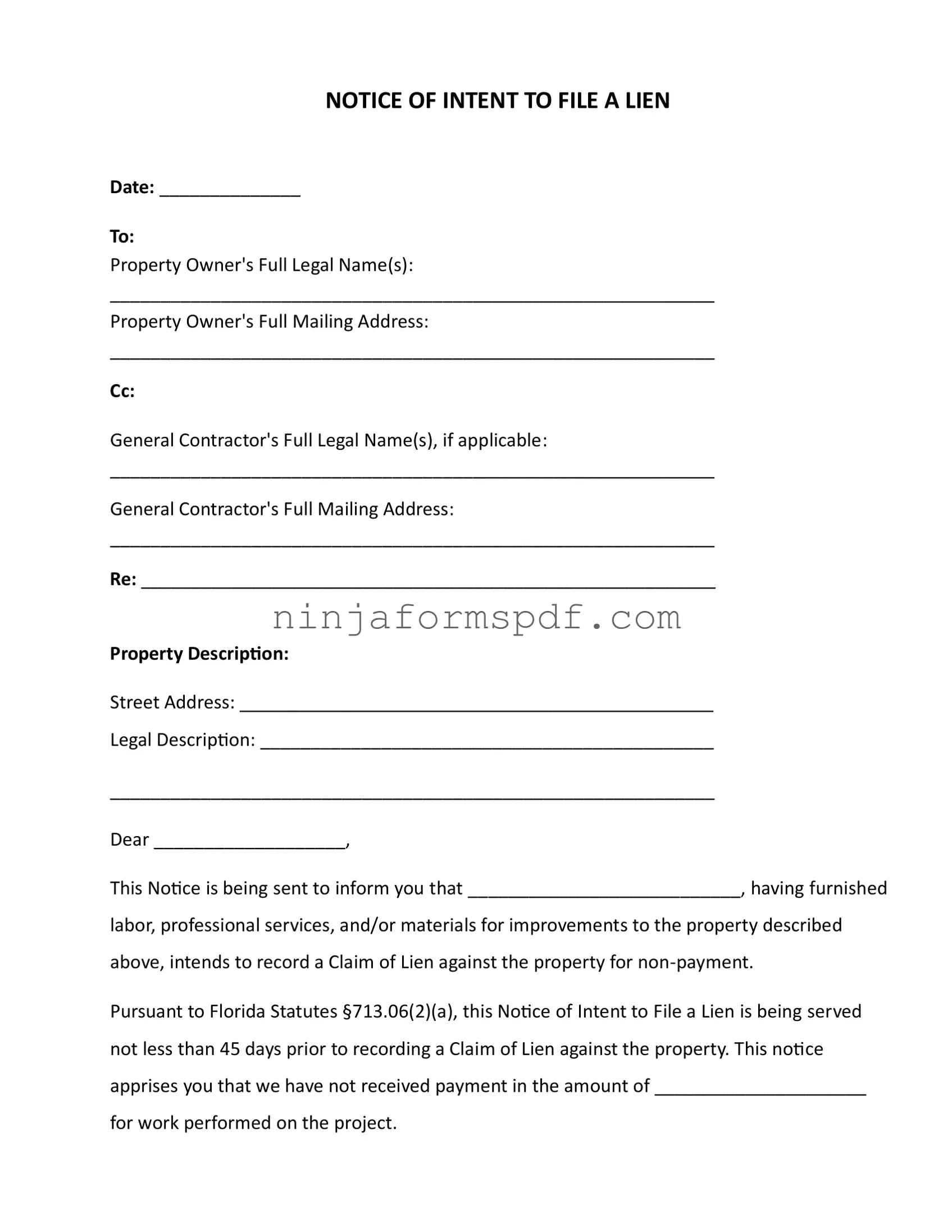What is the purpose of a Notice of Intent to File a Lien in Florida?
The primary purpose of a Notice of Intent to File a Lien is to formally alert a property owner that a party, who has provided labor, services, or materials for improvements to their property and has not been paid, is planning to claim a lien against the property. This notice serves as a final warning, allowing the property owner the chance to settle the outstanding debt before a lien is officially recorded. It's designed to encourage settlement of any unpaid bills for the improvements made to the property.
When should the Notice of Intent to File a Lien be sent?
Under Florida law, specifically Florida Statutes §713.06(2)(a), anyone wishing to file a lien must send a Notice of Intent to File a Lien at least 45 days before actually recording the lien. This provides sufficient time for the property owner to address the issue, either by disputing the claim or paying the debt, potentially avoiding a lien against their property.
Who should receive the Notice of Intent to File a Lien?
The Notice must be served to the property owner at their full mailing address. Additionally, if applicable, the general contractor also needs to be sent a copy of the notice. This ensures that all parties involved in the construction or renovation project are aware of the outstanding debt and the potential lien.
What information needs to be included in the Notice?
The Notice should clearly state the name and address of the party sending the notice, the property owner, and if applicable, the general contractor. It must describe the property in question, including the street and legal description. The Notice should detail the amount outstanding and the work performed. It also must inform the recipient of their right to dispute the claim and the consequences of failing to settle the debt, including potential foreclosure proceedings and legal costs.
What happens if the property owner does not respond to the Notice of Intent to File a Lien?
If the property owner does not make payment in full or provide a satisfactory response within 30 days, as described in Florida Statutes §713.06(2)(b), the party who issued the Notice has the right to proceed with recording a lien against the property. This could lead to the property being subject to foreclosure proceedings in order to settle the debt.
Can a Notice of Intent to File a Lien be served electronically in Florida?
The notice can be served by certified mail, return receipt requested, registered mail, hand delivery, delivery by a process server, or publication if allowed under law. While Florida statutes do not specifically mention electronic service for a Notice of Intent to File a Lien, it is critical to follow the prescribed methods to ensure the notice is legally binding. Always check the current statutes or consult a legal professional to confirm the accepted methods of service.
Is it possible to dispute a Notice of Intent to File a Lien?
Yes, a property owner can dispute a Notice of Intent to File a Lien if they believe the claim is unjustified. This could involve disputing the amount claimed, the quality of the work performed, or whether the work was authorized. It's advisable for the property owner to communicate directly with the claimant to resolve the dispute. If an agreement cannot be reached, seeking legal advice is recommended to explore further options and potentially defend against the lien in court.

